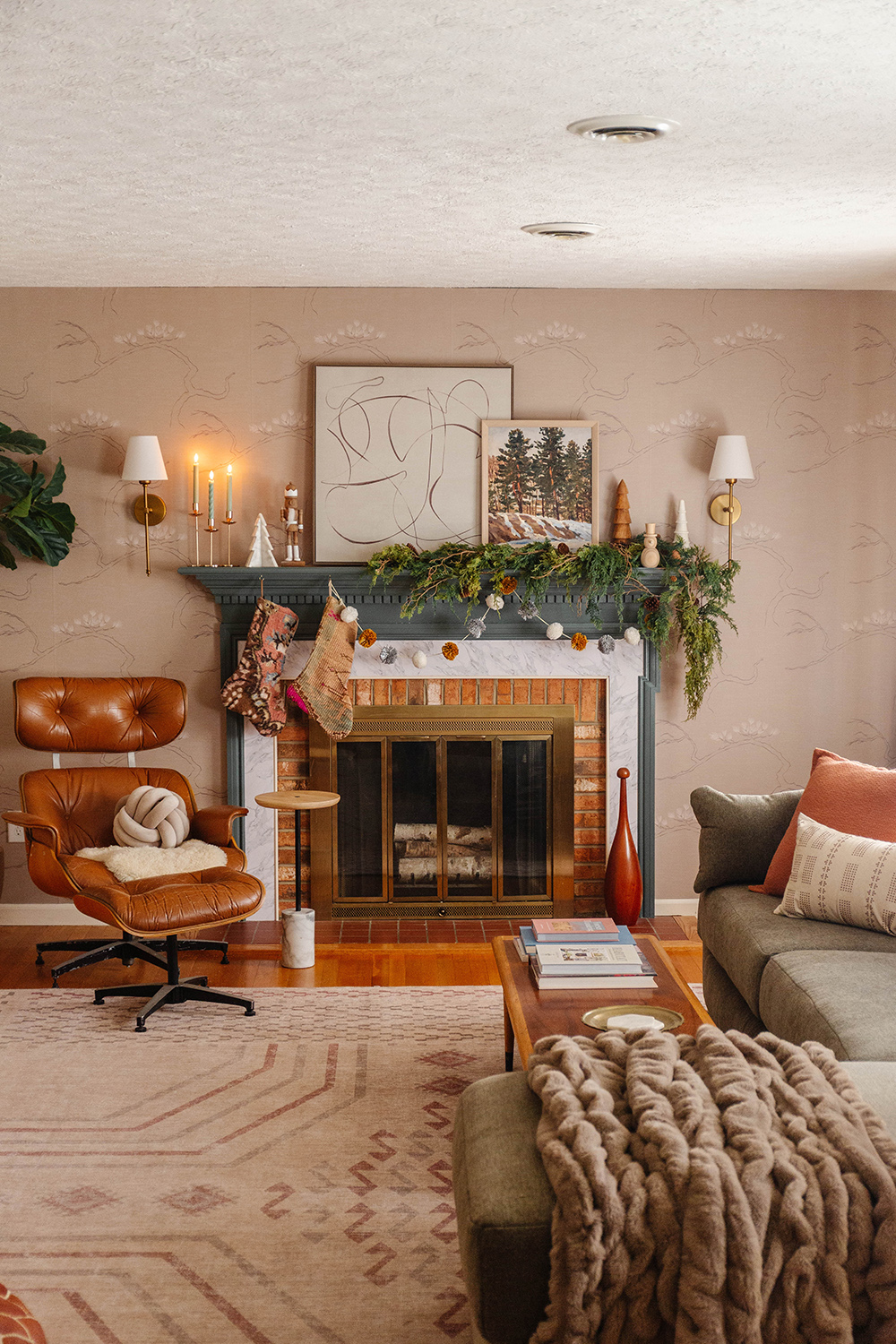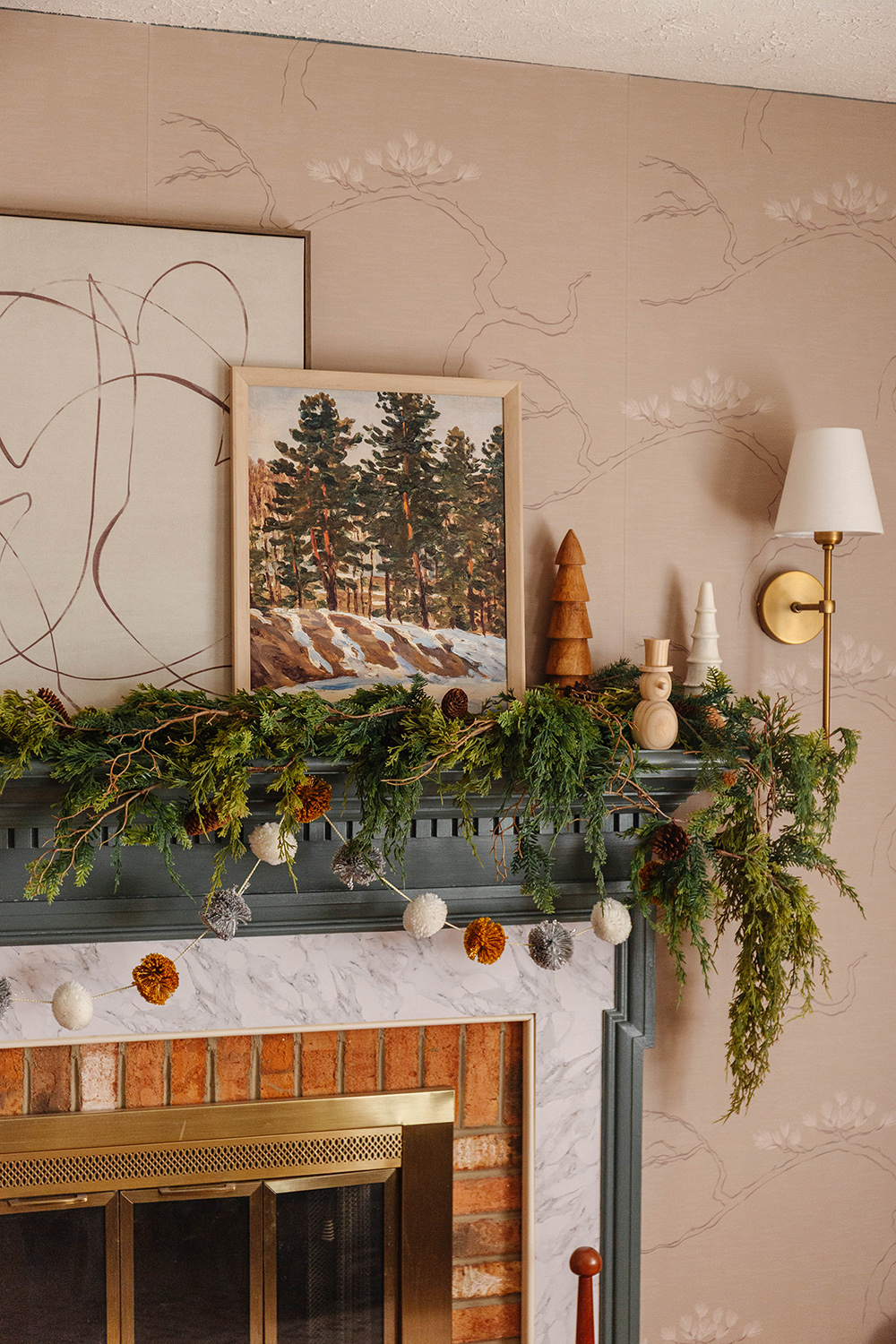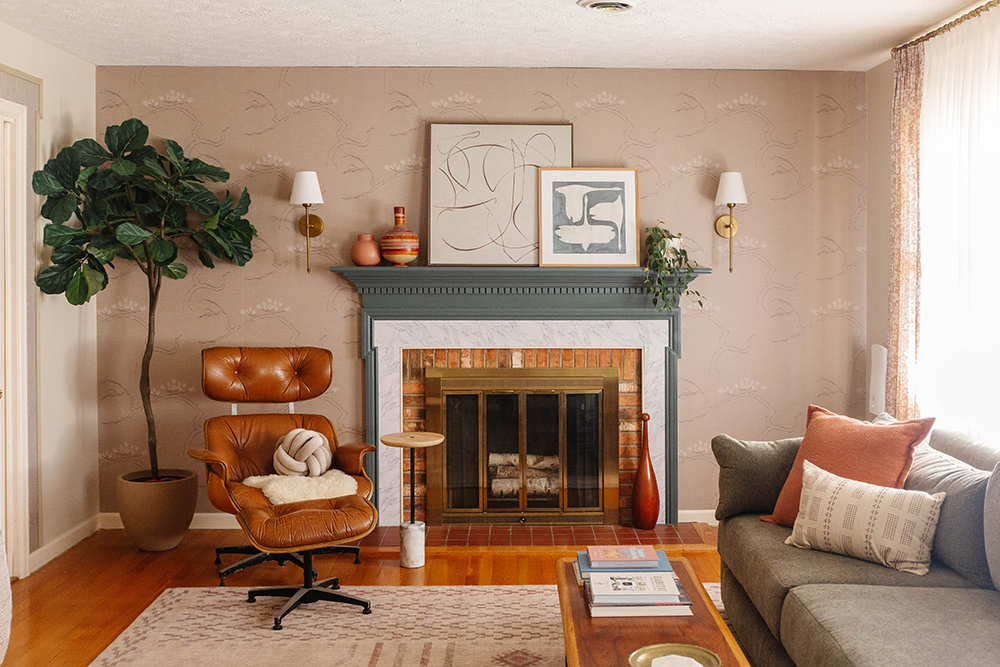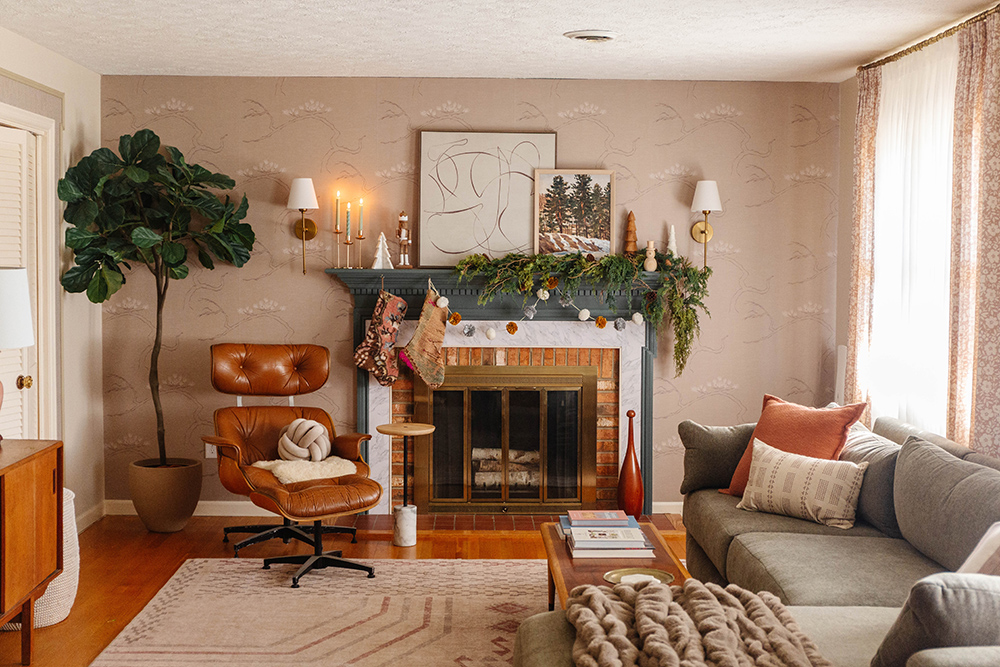*Today’s post was made possible by CrossCountry Mortgage. All opinions are my own.
It’s December 4. Have you finished decorating your space for the holidays yet? If you’re still working away on perfecting the tabletops, empty corners, and open shelves in your home with seasonal accents, I’ve got some extra inspiration to share with you today. Let’s tackle a simple wintertime mantel together! Keep scrolling to see the Christmas-themed styling come together around our fireplace, plus my best tips for working with a slightly unexpected color palette, like we do. I think you’ll find that it’s easier than you expected it to be as long as you follow this simple formula below.
How To Decorate Your Wintertime Mantel:
1. Start with a clean slate. Remove all of your everyday décor so you can look at a blank surface and imagine the possibilities a little easier. This is also a good opportunity to do some much-needed dusting!
2. The foundation of any Christmas mantel, at least in my mind, is garland. Lay yours across the empty mantel top, using small removable sticky hooks to keep thing in place if you need to. I personally like to drape mine a little asymmetrically across my mantel. In other words, I make one side a little longer than the other for a more organic look and feel.
3. Next, set up your art. Since this mantel styling is going to stay up for just a month or so, I don’t like to hang art more permanently. Instead, I lean seasonal art pieces temporarily right there on the mantel through the holiday season—no nails required. Consider reusing one of your bigger everyday pieces of art and then layer in a smaller wintery print, like I did here. This allows you to get the point across without having to buy art that you’ll only use for a handful of weeks out of the year.
4. Time for stockings! Our living room is decorated in shades of blush pink, blue, brown, and rusty orange, so a traditional fire engine red and evergreen Christmas color palette would look out of place in our home. So, I embraced our slightly unexpected color palette by ordering one-of-a-kind stockings from Etsy that are made from vintage rugs. The shape is decidedly “Christmas,” but the color palette actually looks cohesive within the wider picture of our space.
5. For finishing touches, fill in the areas of the mantel with holiday accents, like tabletop trees, brass deer, nutcrackers, and a festive fabric or pom-pom garland. My advice would be to use fewer objects here so as not to clutter up your holiday display, and to opt for accents in neutral colors to create a more subdued, sophisticated look overall. Let your art and stockings be the star of the show!





I included “Before/After” photos above so you can compare the subtle changes I made. What do you think? Can you imagine yourself pulling this off? I know you can! This is such a magical time of year, but, admittedly, it can also feel like one of the most stressful times. If Christmas decorating is up there on your list of anxiety-inducing activities, just try to take it slow and enjoy the process. Find a moment when you don’t have anything else on your plate (even if that means scheduling it for early morning before everyone else in your family wakes up), put on some soft holiday music, and follow my formula listed in today’s post. Make the process fun and embrace the nostalgia of this special season! Don’t let it pass you by—even when doing something as simple as decorating your fireplace mantel. Hope you have as much fun doing it as I did.
*This post contains affiliate links, which means that I earn a small commission when you purchase products that I recommend at no additional cost to you. This allows me to provide free creative content for you to read, save, and share. Rest assured that I never recommend products we wouldn’t use or don’t already love ourselves.

.jpg)
.jpg)
.jpg)
.jpg)
.jpg)
.jpg)
.jpg)
.jpg)
.jpg)
.jpg)
.jpg)
.jpg)
.jpg)
.jpg)



